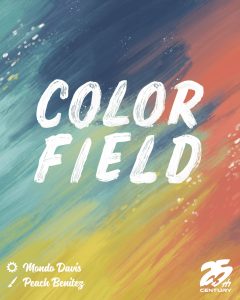 My partner and I enjoy art, so any board games that play around with the theme of painting or canvases catch our attention. It can be boring to keep playing our favorites in this genre so we’re generally willing to give new titles a chance to expand our options.
My partner and I enjoy art, so any board games that play around with the theme of painting or canvases catch our attention. It can be boring to keep playing our favorites in this genre so we’re generally willing to give new titles a chance to expand our options.
Color Field is an abstract artistic game for 2-4 players that takes about 30 minutes to play. The best experience is with four players to cycle through all the paint tiles available.
Gameplay Overview:
Over the course of three rounds, players compete to have the most points from their paintings. Each round consists of three phases: prime your canvas, fill the palette board, and complete your painting.
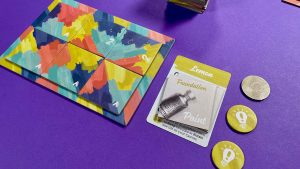
To prime your canvas, you will choose which paint tiles to keep for the canvas. Once all players have six tiles, the palette board is filled with three tiles from the paint deck for the current round. Then, to complete a painting, players will draw and replace paint tiles on their canvas. The old tile goes to the discard space on their player board.
Players score points at the end of the round for each matching edge and for the largest patch of one color on their canvas, so it’s in their best interest to rotate their new tiles to optimize for scoring. If a player finds there’s a different way to adjust their canvas, they can use Inspiration tokens to do so.
The player with the highest score takes 1st position, second highest takes 2nd, and so on. The position determines how many tiles the player can keep to the next round, which is a built-in catch-up mechanism. The new round then begins with whoever has the First Player marker.
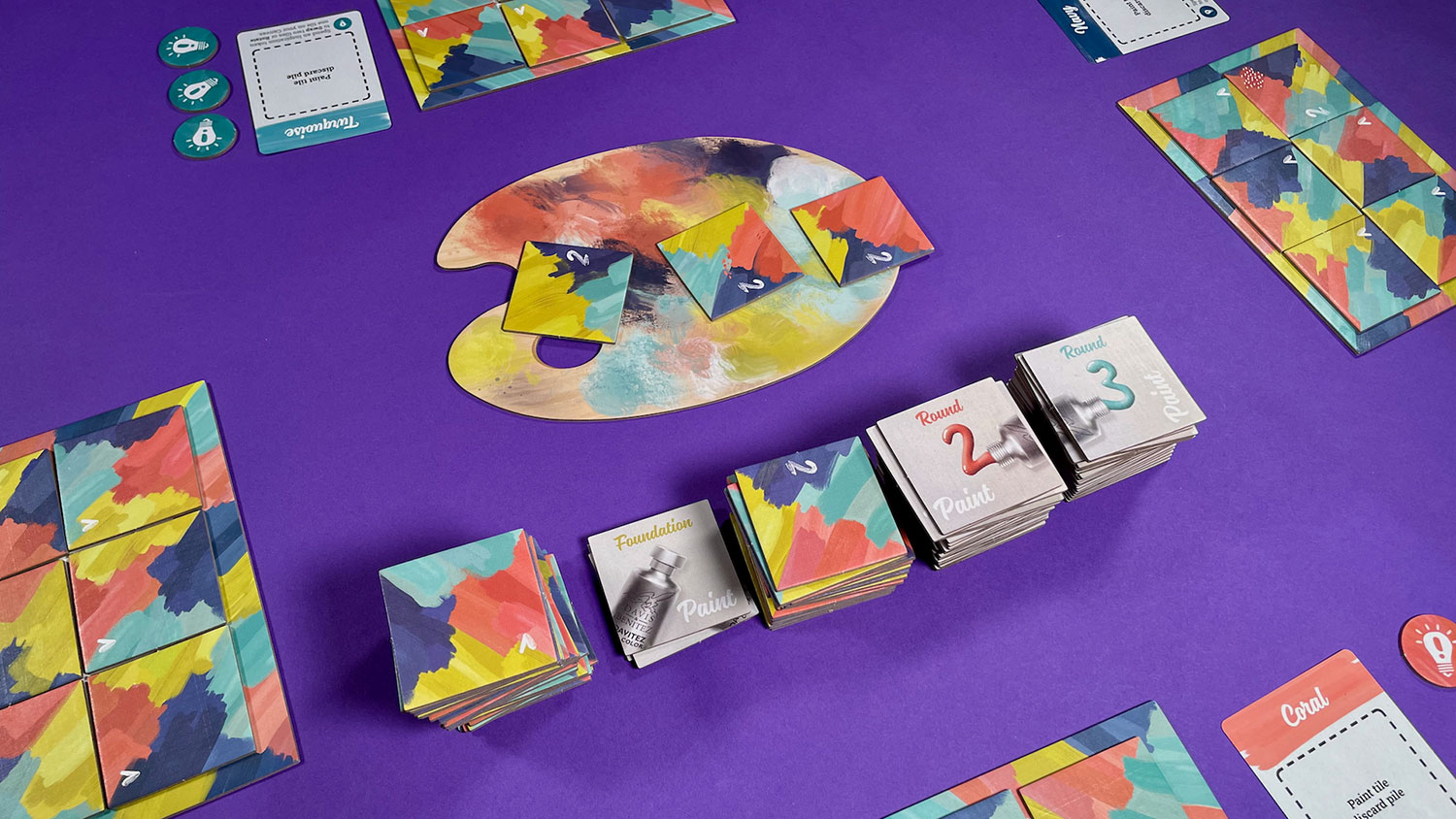
Game Experience:
As with any artistic game, the first thing I noticed was the use of alternative colors that appear to be easier for color blindness. This gives the game box itself a more appealing aesthetic on the game shelf than others that emphasize bold or primary colors, which I enjoy quite a bit. When digging into the game components themselves, the painted shapes on tiles were easier for my brain to parse as my strength is not in spatial awareness. Overall the design choices seemed thoughtful and had both practical and visual purposes.
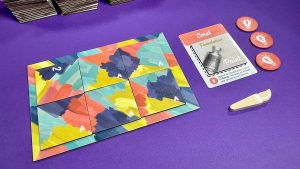
Generally I like to look over the rulebook myself before trying to teach at the table but I didn’t have a chance to do that this time around. I was pleasantly surprised that reading the rulebook word-for-word for the teaching segment was easy, so for those of you that want to just grab the game and get it to the table you’ll find it’s quick to run through.
The main draw in gameplay is its introduction to spatial puzzling and planning, as it rewards players who can use in-game mechanics to undo, redo, and execute plans all at once. Even in my own experience with personal art projects, traditional media like paint can sometimes not behave in ways you intend so I liked that the gameplay aligned with reality in that way.
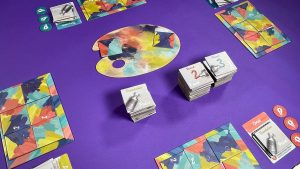
Unfortunately, this excitement only lasted for a game or two and consequently impacted the replay value that we all look for in our game collection. They include advanced play cards to try and spice things up again but they honestly have minimal impact on the desire to play the game more than a couple of times.
In addition to that initial spark fading, the game mechanic to undo or redo plans with inspiration tokens seemed to only lengthen the gameplay and not actually enhance it. It’s a great option when the palette board doesn’t have much to offer or priming the canvas didn’t go as planned but other than that it gave players room to overthink their canvas strategy.
Final Thoughts:
This game is for casual gamers looking to have a unique, abstract, and artistic game in their collection that is easy to teach and learn at the table. Color Field’s attention to using unique colors and patterns in its design will be helpful to those who have color blindness or difficulty parsing spatial puzzles as well. However, experienced gamers wanting a new artsy game with replay value will need to continue their search as this game is only exciting for the first couple of runs and the advanced play cards do not add much to the experience.
Final Score: 2.5 Stars – Delve into the world of abstract painting in this abstract artistic puzzle game and score points based on your canvas’ aesthetic.
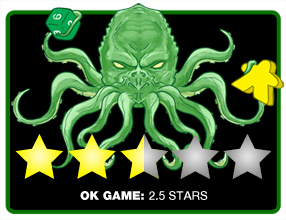 Hits:
Hits:
• Unique colors are easier on the eyes
• Rules are easy to learn and teach
• Good introduction to spatial puzzling
Misses:
• Replay value for the base game lacking
• Advanced play cards have minimal impact
• Inspiration tokens extend game length
Source: Board Game Quest



